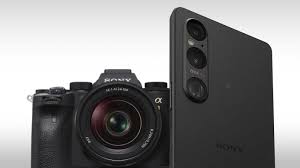Enhanced electronics refer to a category of electronic devices that incorporate cutting-edge technologies to enhance their performance, efficiency, and capabilities. These technologies go beyond the conventional components and designs, incorporating innovations like nanotechnology, flexible materials, and energy harvesting mechanisms.

3.1 Nanotechnology Integration
Nanotechnology has played a pivotal role in enhancing electronics. By manipulating materials at the nanoscale level, scientists and engineers can create devices with unprecedented precision and efficiency. Nanomaterials, such as carbon nanotubes and quantum dots, are integrated into transistors, sensors, and displays, resulting in faster processors, higher-resolution screens, and more sensitive detectors.
3.2 Flexible and Wearable Electronics
The development of flexible and wearable electronics has revolutionized the concept of device design. Flexible circuits and displays allow devices to bend and conform to various shapes, enabling innovative form factors and applications. Wearable devices, from smartwatches to health monitors, have become increasingly popular due to their comfort and ability to collect real-time data.
3.3 Energy Harvesting Technologies
Enhanced electronics also embrace energy harvesting technologies to reduce dependence on traditional power sources. Piezoelectric materials and solar cells are integrated into devices to capture energy from motion and light. This advancement has led to self-powered devices and extended battery life.
Applications of Enhanced Electronics
4.1 Healthcare and Medical Devices
Enhanced electronics have transformed the healthcare industry. From advanced imaging equipment for accurate diagnostics to implantable devices that monitor and regulate bodily functions, these technologies have improved patient care and treatment outcomes.
4.2 Communication Systems
Communication systems have greatly benefited from enhanced electronics. Faster processors and high-speed connectivity have paved the way for seamless data transmission, enabling real-time communication, video conferencing, and internet-of-things (IoT) devices.
4.3 Consumer Electronics
Consumers now enjoy enhanced electronic devices that offer superior performance and convenience. Smartphones with AI-powered features, ultra-high-definition televisions, and immersive gaming experiences are just a few examples of how enhanced electronics have enriched our daily lives.
Challenges and Future Outlook
While enhanced electronics hold immense potential, several challenges must be addressed. Privacy concerns regarding data collection, the environmental impact of electronic waste, and the need for standardized regulations are areas that require attention. However, as research and development continue, it is likely that these challenges will be met with innovative solutions.
Conclusion
Enhanced electronics have ushered in a new era of technological capabilities. Through nanotechnology integration, flexible designs, and energy harvesting, these devices are changing the landscape of industries ranging from healthcare to consumer electronics. As challenges are overcome and new horizons are explored, the future of enhanced electronics is undeniably promising.
Access Now: https://bit.ly/J_Umma
FAQs
7.1 What is enhanced electronics?
Enhanced electronics are electronic devices that incorporate advanced technologies to enhance their performance, efficiency, and capabilities beyond traditional designs.
7.2 How does nanotechnology contribute to enhanced electronics?
Nanotechnology enables the manipulation of materials at the nanoscale, leading to faster processors, higher-resolution displays, and more efficient sensors.
7.3 What are the potential applications of flexible and wearable electronics?
Flexible and wearable electronics find applications in health monitoring, flexible displays, and innovative device designs that conform to various shapes.
7.4 How does enhanced electronics impact the healthcare industry?
Enhanced electronics have improved diagnostics, patient care, and treatment outcomes through advanced imaging equipment and implantable medical devices.
7.5 What are the challenges facing the widespread adoption of enhanced electronics?
Challenges include data privacy concerns, electronic waste management, and the need for standardized regulations to ensure responsible development and usage.





One thought on “Enhanced electronics have transformed the healthcare industry.”